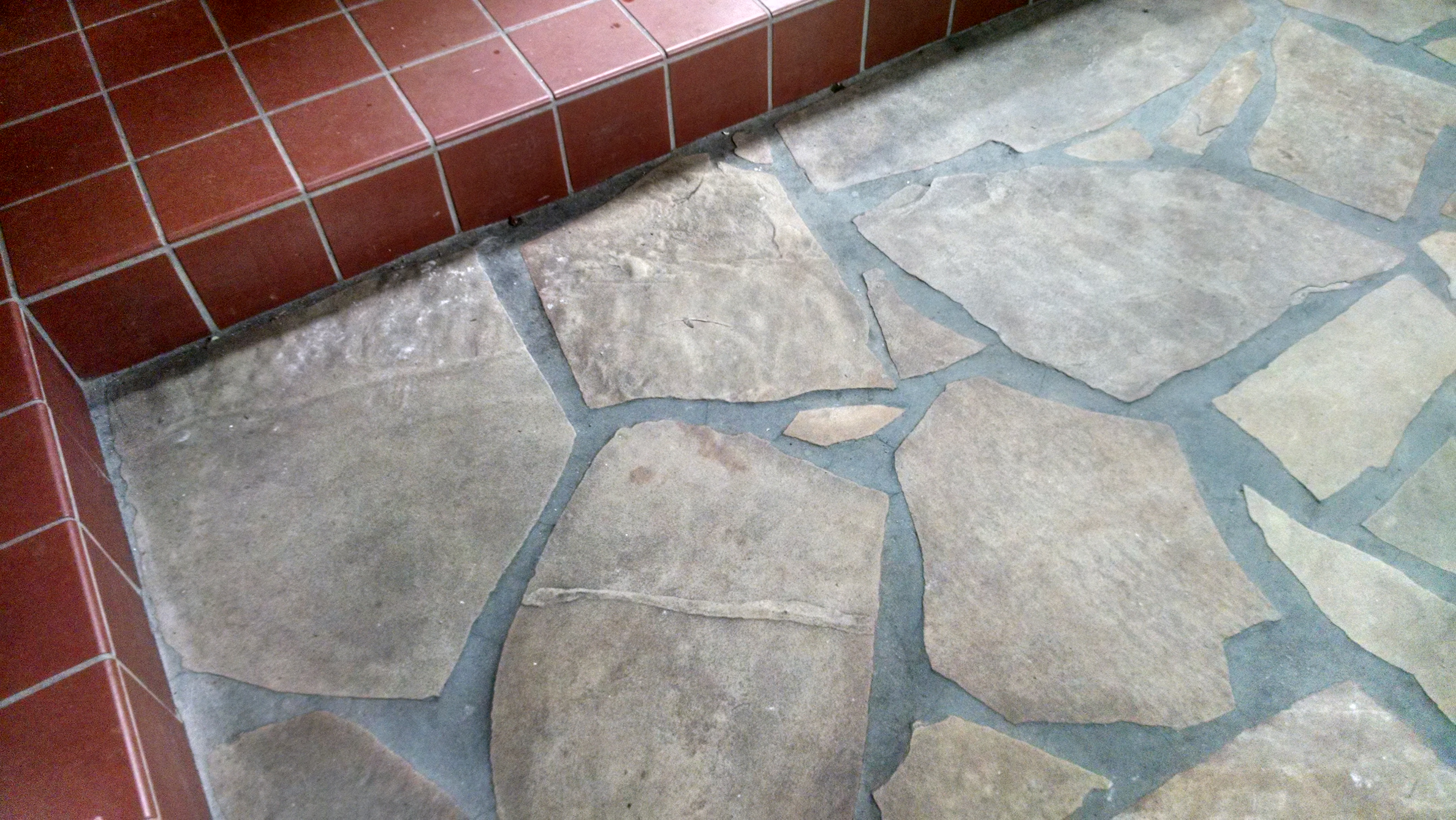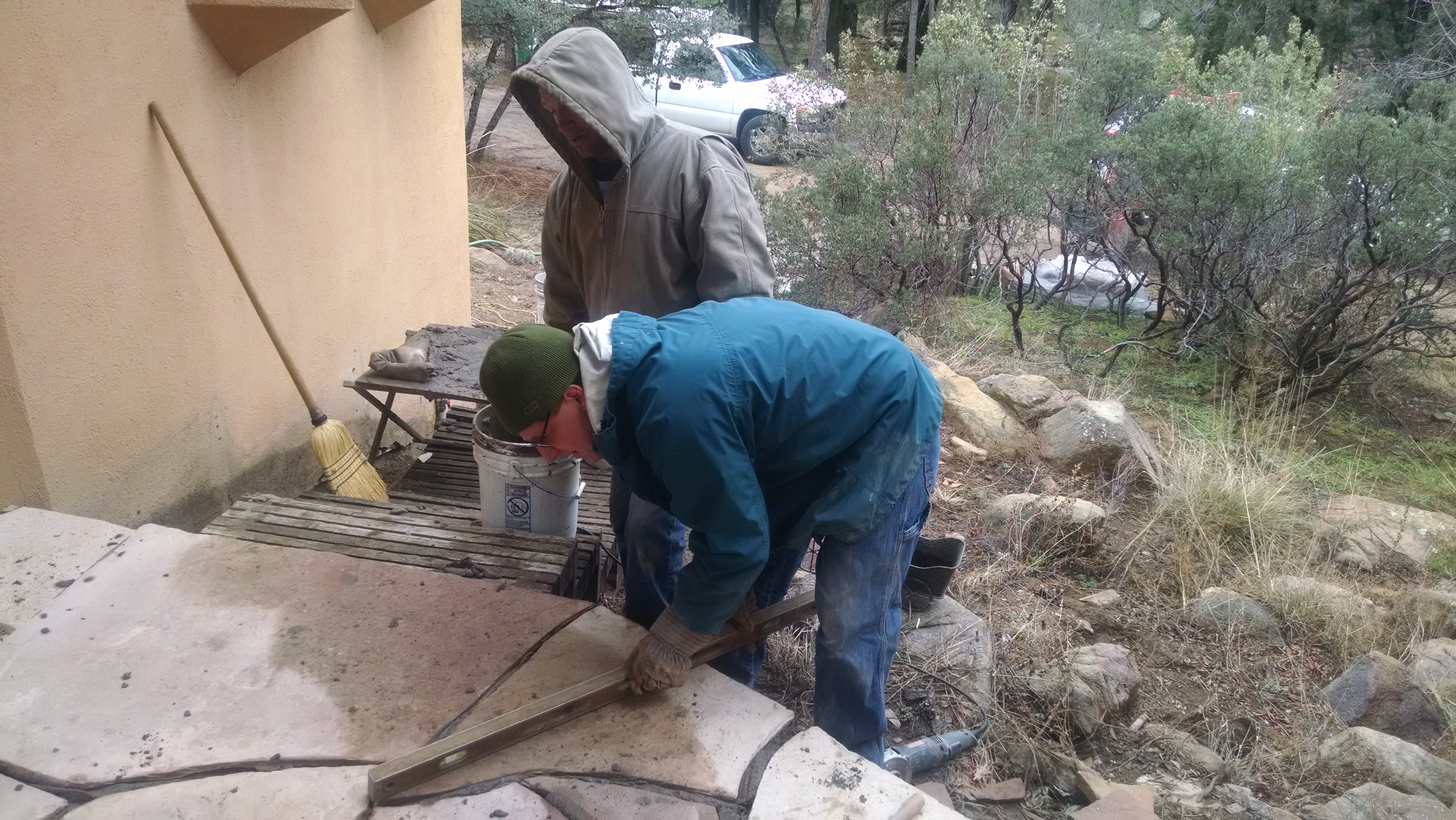 Using Flagstone in the Landscape - January 11, 2017 Jeff Schalau, Agent, Agriculture & Natural Resources University of Arizona Cooperative Extension, Yavapai County Arizona has many areas with abundant stone suitable for construction – you only need look at the prehistoric buildings and ruins present across wide areas of the state. Some of these structures are still in use. Others are protected by the Antiquities Act of 1906. Early settlers often built walls, root cellars, foundations, smokehouses, and other structural features from local stone. It is a building material that has stood the test of time. Sandstone (from here on called “flagstone”) is plentiful in our area and is probably the easiest native stone use for construction because it is “bedded”. This means that it formed in horizontal layers resulting in flat, parallel surfaces. Flagstone can also be split along the bedded surfaces making it possible to have uniform thicknesses. It can also be cut, scored, or chiseled into regular or irregular shapes. Flagstone also has a range of colors including pink, red, brown, and light to medium shades of gray. In case you were not aware, sandstone is mined in Yavapai County (near Ashfork and south of Williams) and can be purchased from local stone yards. Of course, Sedona has abundant sandstone too, but it might not be as convenient as ordering it from a local stone yard. When ordering, you can also specify size, shape, and thickness. There are also many local contractors and companies that know how to work with flagstone. Do-it-yourselfers can learn how to pave with flagstone without a major investment in tools. The simplest use of flagstone for informal paving is to install it on a layer of coarse sand called “screed”. Here, the area to be paved must be leveled to allow for a layer of screed and the thickness of the sandstone. It’s good to have a couple of inches of screed to allow for varying thicknesses of sandstone. I recommend using thicker grades of flagstone (1 ¾ to 2 ½ inches thick) for screed-based projects. It is usually ordered by the ton and square footage can be approximated based on thickness. To begin laying flagstone on screed, level the area and include a slight slope if water will be present. Rake out the screed and compact it as much as possible. Then lay out the flagstone pieces in a visually pleasing manner such that they form reasonably small joints and fit nicely into the space. Flagstone can be scored and chiseled to create the proper shapes and uniform joints. A small diamond saw can also be used to score and shape for more refined joints. Avoid using small pieces (less than 1 foot) if possible. Once the shapes are cut, start in a high corner leveling adjacent stones as you go. This is done by using a level and a straight 2 x 4 to create a relatively uniform surface. Sand can be added or removed to create the best fit. Continue working and reworking until you are satisfied with the appearance. Another method of laying flagstone is to lay it on a concrete slab using mortar and grouting the joints. This provides a cleaner appearance and works well indoors or outdoors. When used outdoors, weeds cannot grow through mortared flagstone and it creates a “cleaner” looking space. Conversely, when flagstone is installed on screed, plants (often weeds) will grow between the stones and it will always have an informal appearance. Here, plants such as creeping thyme or catmint can be planted in the cracks. Do-it-yourselfers should have an easy time laying flagstone on screed. Laying flagstone on a slab with mortar is a bigger job and probably best suited to professionals. In closing, I encourage you to explore the use flagstone in the landscape. It is local, affordable, and durable. Here, I have only discussed using flagstone in paving, but it is also excellent for walls and other features. Below, I’ve included multiple photos of flagstone used inside my home and in the hardscape along with a video that demonstrates installing on screed along with cutting and trimming techniques. I hope this Backyard Gardener edition inspires you to use and enjoy our local flagstone. Follow the Backyard Gardener on Twitter – use the link on the BYG website. If you have other gardening questions, call the Master Gardener help line in the Camp Verde office at 928-554-8992 or e-mail us at verdevalleymg@gmail.com and be sure to include your name, address and phone number. Find past Backyard Gardener columns or provide feedback at the Backyard Gardener web site: http://cals.arizona.edu/yavapai/anr/hort/byg/. Flagstone Photos  Flagstone installed on screed for an outdoor walkway. The granite retaining wall in the background is drystacked granite. Small plants grow between the stones for an informal appearance.
Flagstone installed on screed for an outdoor walkway. The granite retaining wall in the background is drystacked granite. Small plants grow between the stones for an informal appearance. Flagstone installed on top of a slab in an interior entryway. This installation has wide grout and small pieces of flagstone were used.
Flagstone installed on top of a slab in an interior entryway. This installation has wide grout and small pieces of flagstone were used. Craftsmen installing flagstone on a slab of an outdoor entryway. This installation will have narrow grout and larger pieces of flagstone were cut and closely fit.
Craftsmen installing flagstone on a slab of an outdoor entryway. This installation will have narrow grout and larger pieces of flagstone were cut and closely fit.Videos Additional Resource Constructing Flagstone Steps in the Landscape University of Minnesota Extension www.extension.umn.edu/garden/landscaping/implement/flagstone.html |